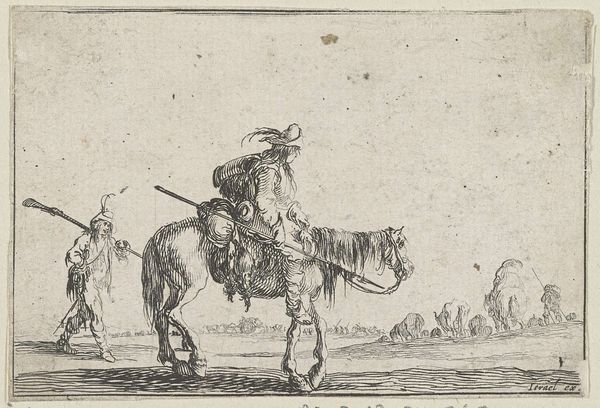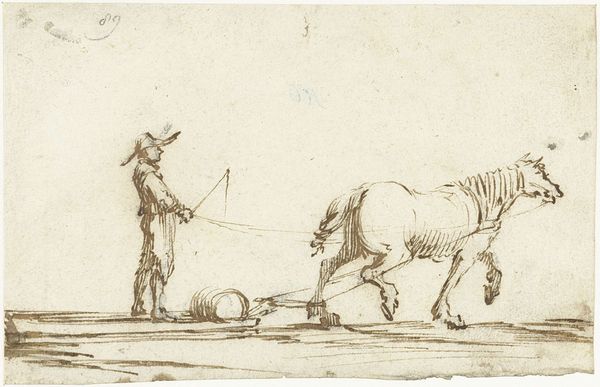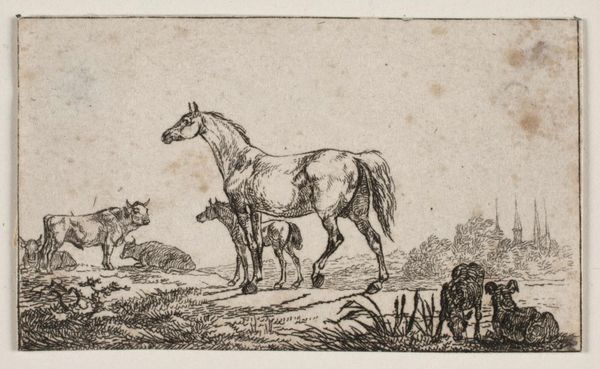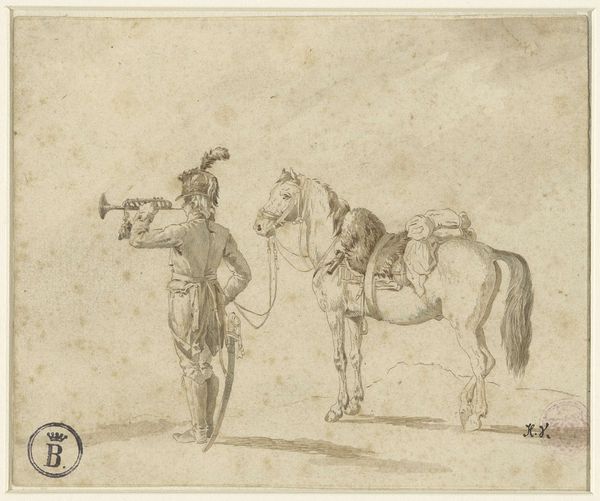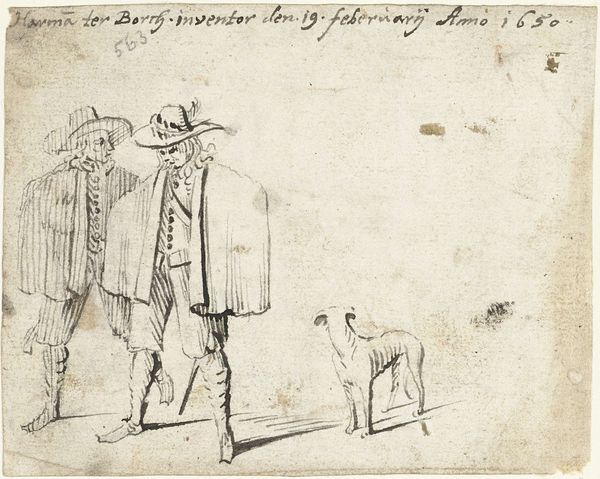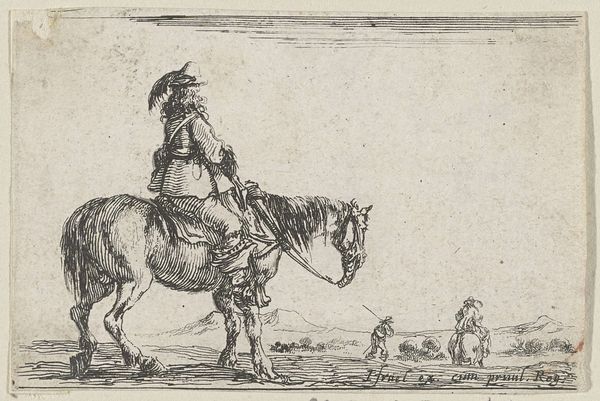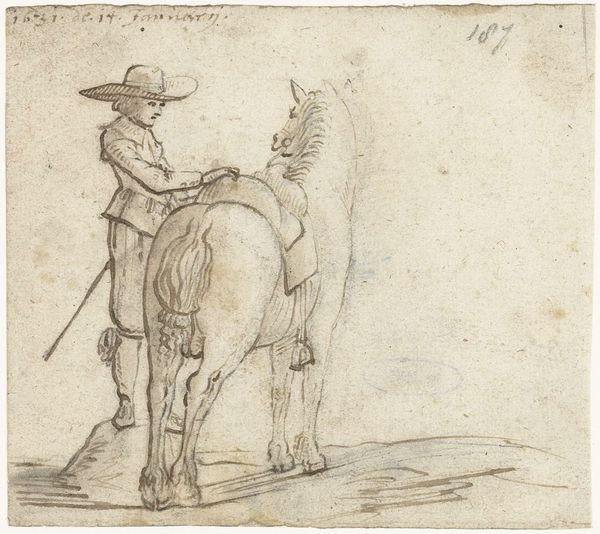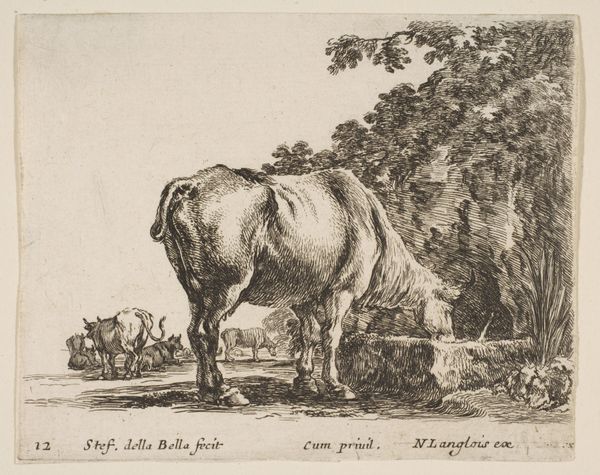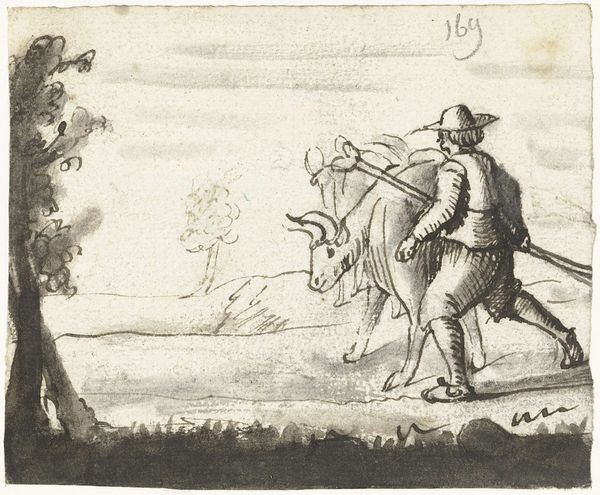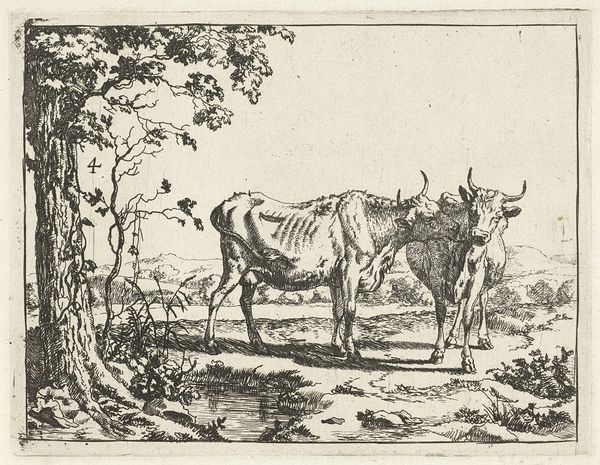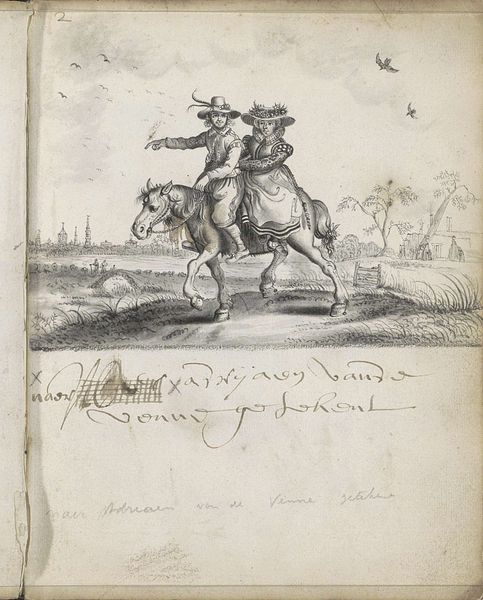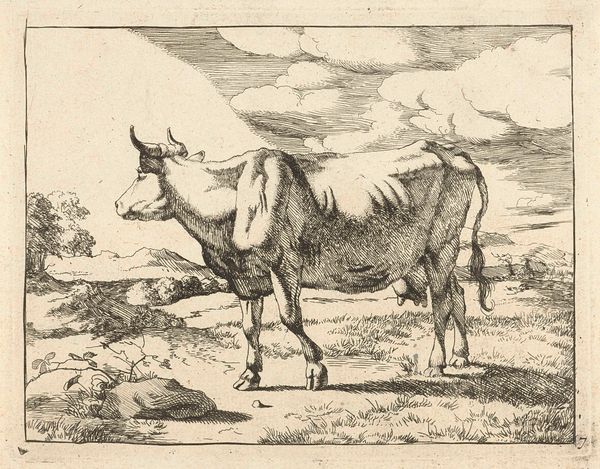
drawing, ink
#
drawing
#
dutch-golden-age
#
pencil sketch
#
landscape
#
figuration
#
ink
#
ink drawing experimentation
#
pen-ink sketch
#
sketchbook drawing
#
genre-painting
#
realism
Dimensions: height 181 mm, width 267 mm
Copyright: Rijks Museum: Open Domain
Curator: Oh, what a striking drawing! At first glance, there’s a kind of muted honesty to it, almost austere, yet still brimming with life. It really captures a moment of movement. Editor: Indeed! This intriguing sketch, created with ink, possibly around 1651, is by Harmen ter Borch and it's titled "Twee koeienhouders drijven hun vee, van achteren"—"Two Cattle Herders Driving Their Cattle, from Behind." Currently, it resides at the Rijksmuseum. I am curious as to the use of the animals' rears. It reminds me a bit of Berger's discussion of animal spectators in "Why Look at Animals?". Curator: "From Behind" indeed. Very cheeky. The title immediately flips our gaze, doesn't it? We're not meant to admire some majestic pastoral scene. Instead, we’re faced with… well, the business end of livestock. But it's beautifully rendered. Look at the variation in line weight, creating such depth with so few strokes! The rears are wonderfully weighty, but what's really wonderful for me are those long snouts that vanish in the horizon. Editor: Absolutely, but I think focusing on those backsides offers a specific lens—thinking about the animal within the frameworks of labor, resources, and ownership during the Dutch Golden Age, where agriculture was so tied to capital and trade. What kind of labor regime is required to put together what would have amounted to Dutch Golden Age capital? Curator: Fair point, always consider the labor! The drudgery. And yet… isn't there something universally human – or perhaps animalian – about this scene, too? That shared journey, that plodding forward. Editor: I see that tension you're pointing at – the grounded reality and the potential for projection. The figures are deliberately generic. Who are these men? What about these cows? What were they meant for? I think that ambiguity lets viewers grapple with complex relationships to the non-human within unequal economic systems. It highlights the dynamics between humans and animals but also obscures individuals involved and their fates. The whole setup is… morally complex. Curator: And it is a beguiling tension that lingers. Ter Borch gives us just enough detail, then leaves us to wander the rest of the way. A landscape, really, of implications, that the modern audience might find, morally and historically, discomfiting, and for that reason compelling. Editor: Beautifully said! The image and his art-making style make me think a lot about power relationships between species in different social classes during the time.
Comments
No comments
Be the first to comment and join the conversation on the ultimate creative platform.
